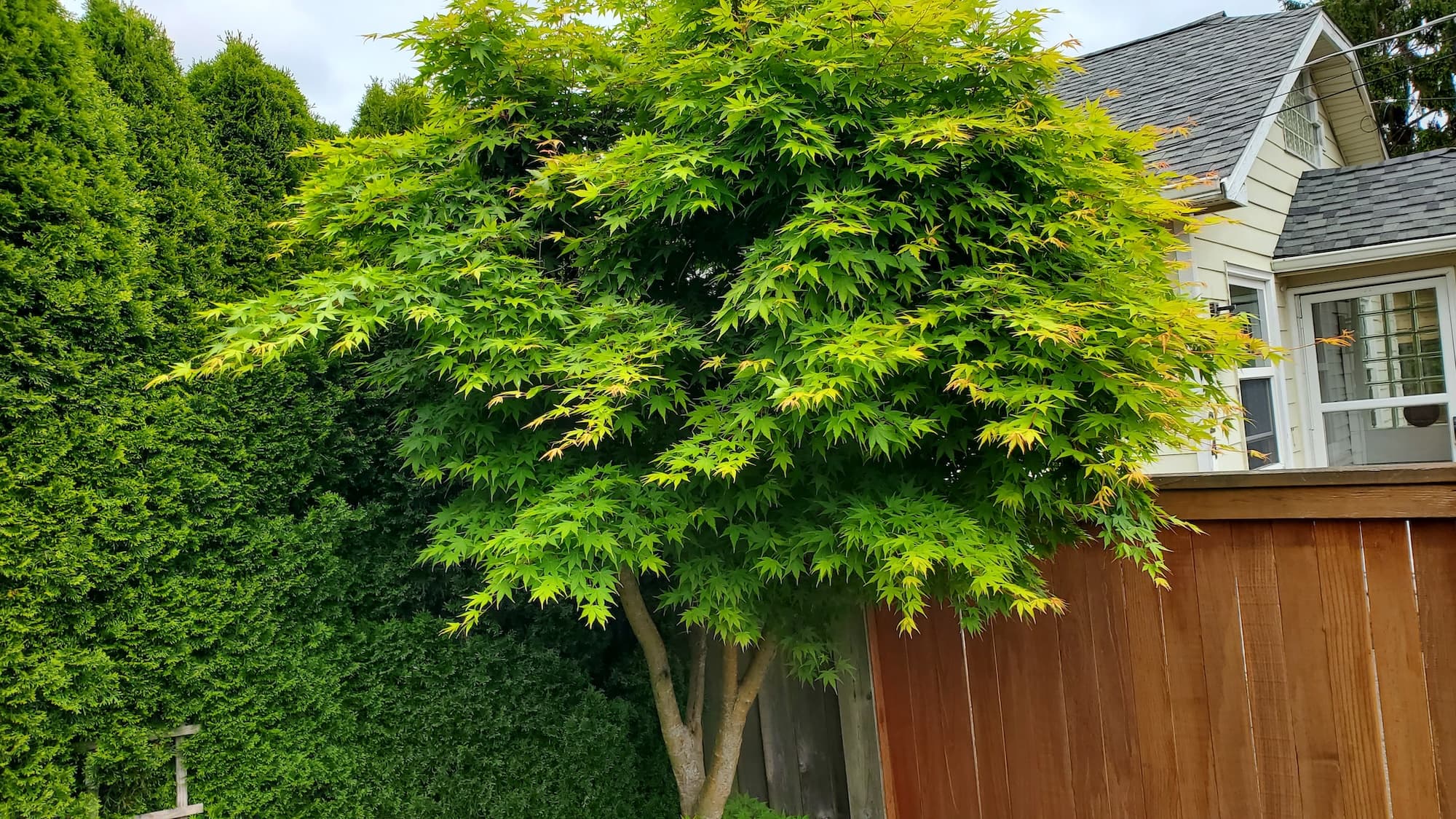West Seattle Cherry Tree Pruning
Homeowner’s Issue
Cherry trees in West Seattle give great spring show and tidy shade, but the local climate and lot conditions make care different than the eastside. Soils here are a mixed bag — glacially influenced loam in places, pockets of compacted fill on older lots, and clay in low-lying yards. Add our long, wet winters and short, dry summers and you get trees that fight root rot in soggy spots and drought stress in July. Many West Seattle yards sit on slopes or terraces (Admiral and parts of Alki), which creates accelerated runoff and puts more weight on weak branch unions after storms.
You’ll see heavy moss and ivy pressure in shady, north-facing corners and fast spring weed flushes after first warm weeks. Canker and rain-splashed fungal issues are real here, so timing and clean tools matter. HOA or neighborhood covenants in some pockets (Morgan Junction, High Point) want tidy, safe street views — that means lift low limbs, remove hazardous crossing branches, and keep the bloom without turning the tree into a stubby mess. Sustainable pruning, careful debris handling, and mulch to stabilize soil are the practical responses for West Seattle properties that want healthy trees and less yearly maintenance.
Our Quality Service
We prune for structure, bloom health, and safety using clean, sharp hand tools, pole saws, and chip vans — no herbicides, ever. Typical jobs:
- Small yard or single cherry: 1–3 hours.
- Mature or multi-stem specimen: half day to a day, depending on access and slope.
We follow seasonal best practices: late winter to early spring for major structural cuts, selective summer pruning for thinning and clearing sight lines. On sloped West Seattle lots we work from stabilized ladders and use rope-and-belay for safety. Debris gets chipped onsite when possible; larger material is hauled to green-waste or compost facilities. We recommend organic mulches and compost top-dressing to improve the variable soils and reduce erosion. Our approach reduces storm damage risk, improves curb appeal for neighbors and HOAs, and lowers recurring maintenance.
What’s Included
- Visual health assessment and pruning plan.
- Removal of dead, crossing, or hazardous branches.
- Crown thinning and selective shaping to preserve bloom and fruiting wood.
- Onsite chipping and tidy cleanup.
- Disposal to green-waste or haul-away per customer preference.
Options / Upgrades:
- Mulch + fabric edge for root protection and weed suppression.
- Compost top-dressing and soil test.
- Cabling/bracing consultation for structurally weak unions.
- Organic pest monitoring and manual/physical weed control (hand-pull, repeat maintenance).
- Haul-away vs. City green-bin drop-off.
Before & After / Expectations
Expect some noise and a pile of cuttings before we chip — pruning isn’t silent or invisible. On small trees we leave yards broom-clean within hours; larger specimens on slopes may take a day and require a brief driveway or street-space for our chip truck. We do our best to protect lawn, hardscapes, and irrigation lines, but tight access can mean additional time.
Care tips for West Seattle:
- Best pruning windows: late winter/early spring for structural work; light summer thinning if needed.
- Watering: deep soak in dry July–August weeks; morning is best.
- Moss & ivy: repeat control is necessary on shady, damp exposures.
- Expect new shoots in weeks after cuts; quality pruning reduces weak water-sprout flushes.
FAQs
Q: When should I prune a cherry in West Seattle?
A: Major structural pruning late winter/early spring; light shaping in summer. We’ll recommend based on species and local site conditions.Q: How long will the job take?
A: Small trees 1–3 hours; mature specimens half to full day. Steep or tight-access lots add time.Q: Do you use chemicals for weeds or pests?
A: No. We use sustainable, non-chemical methods only — mechanical, cultural, and organic practices.Q: Will you remove the debris?
A: Yes. Choose onsite chipping, green-bin drop-off, or haul-away at booking.Q: Need a permit?
A: Usually not for pruning. If it’s a street or protected tree, or near utilities, we’ll advise next steps.
Call to Action
West Seattle homeowners — if your cherries need a sensible trim that preserves blooms and reduces storm risk, we can help. We book quickly, give free estimates from photos or onsite visits, and know West Seattle topography and microclimates. Email neatandtidyseattle@gmail.com to schedule a consult or get a straightforward quote from a local crew that cares about durable, sustainable results.










